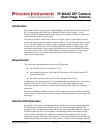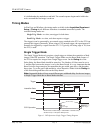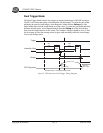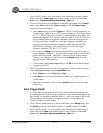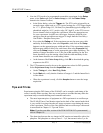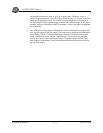
Princeton Instruments 1 of 8 May 26, 2004
E:\Ma nuals\Syst ems\PI-MAX\PI-M AX2 DIF Ca mera.doc
PI-MAX2 DIF Camera
(Dual Image Feature)
Introduction
This technical note assumes a basic understanding of the operation of the PI-MAX2 and
PTG in Gate Mode using WinView or WinSpec. Please refer to Chapter 7 of the
PI-MAX/PI-MAX2 system manual if you do not feel confident with the basic operation
of the PI-MAX and PTG in Gate mode.
The purpose of the PI-MAX2 DIF system is to acquire a pair of gated images in rapid
succession. The time between frames can be as short as 2 µs with exposure times as short
as 5 ns. The DIF capability is ideally suited to capturing rapidly evolving events. These
experiments will fall into one of two broadly applicable categories: single trigger and
dual trigger experiments. Single trigger experiments involve a single impulse event that
evolves over time such as a laser-induced plasma or luminescence decay. Dual trigger
experiments involve two impulses separated in time such as double laser pulse
velocimetry measurements.
Requirements
The following requirements must be met for DIF operation:
•
the PI-MAX2 must use an interline CCD,
•
the controller must have a High Speed PCI Interface (TAXI) board and a PTG
board installed, and
•
the entire system must be set up for DIF operation at the factory.
In addition to these requirements, it is recommended that the intensifier have a fast decay
phosphor (P46 or P47). Since DIF operation involves acquiring images in rapid
succession, phosphor persistence can become the limiting factor in the rate of image
acquisition.
WinView or WinSpec software (version 2.5.16 or later) can control the DIF functionality
of the PI-MAX2 and provides full access to the two DIF timing modes: single trigger and
dual trigger.
Interline CCD Operation
An interline CCD consists of alternating columns of light sensitive pixels and storage pixels.
The light sensitive columns are referred to as the active area and acquire the image. The
storage pixels are called the masked area and store the image in the dark while it is read out.
With this architecture, the CCD can acquire a second image while the first image is being
read out, unlike a standard CCD, which must read out the first image before the second
acquisition can begin. The ability of the interline CCD to quickly transfer an image under the
masked columns and hold it there makes DIF possible. As soon as the first image is acquired,



